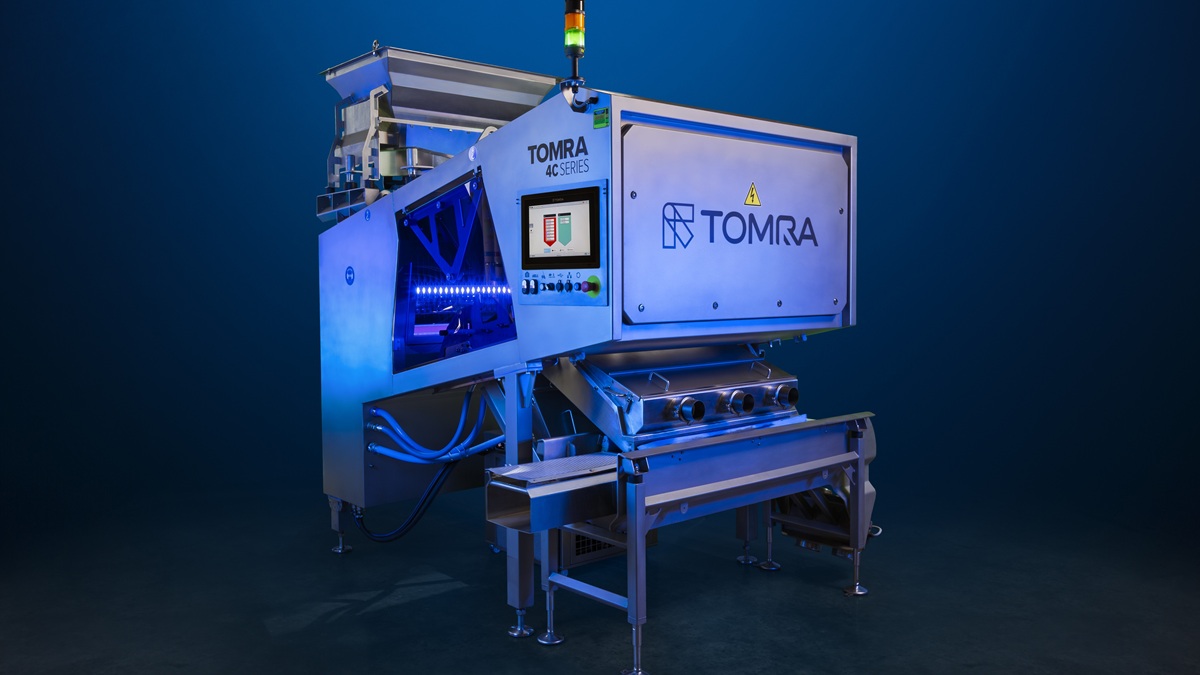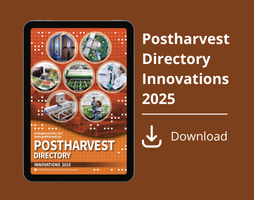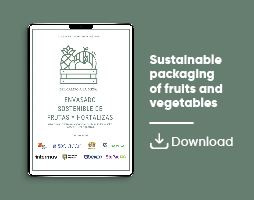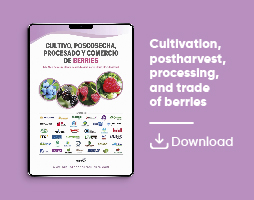News
Review about plant-based extracts and elicitors to preserve fruit quality
The review by Dixin Chen et al. considers the current status and potential of plant-based extracts and elicitors as tools to mantain postharvest quality of produce, and includes a bibliometric assessment of the research landscape from 2005 to 2025, to identify key trends and effective solutions

Plant-based extracts and elicitors (signaling molecules that activate the fruit’s innate defense responses) have emerged as promising and sustainable alternatives to synthetic chemicals for preserving postharvest fruit quality and extending shelf life.
This review provides a comprehensive analysis, uniquely complemented by a bibliometric assessment of the research landscape from 2005 to 2025, to identify key trends and effective solutions.
The efficacy of various natural compounds are systematically examined, including:
- essential oils (complex volatile compounds with potent antimicrobial activity such as lemongrass and thyme),
- phenolic-rich botanical extracts like neem and aloe vera, and
- plant-derived elicitors such as methyl jasmonate and salicylic acid.
Their preservative mechanisms are multifaceted, involving direct antimicrobial activity by:
- disrupting microbial membranes,
- potent antioxidant effects that scavenge free radicals, and
- the induction of a fruit’s innate defense systems, enhancing the activity of enzymes like
- superoxide dismutase (SOD),
- catalase (CAT), and
- peroxidase (POD).
Applications of edible coatings of chitosan or aloe vera gel, nano-emulsions, and pre- or postharvest treatments effectively reduce decay by Botrytis cinerea and Penicillium spp.), delay ripening by suppressing ethylene production, minimize water loss, and alleviate chilling injury.
Despite their potential, widspread commercialization affords chalenges such as:
- sensory changes,
- batch-to-batch variability,
- regulatory hurdles, and
- scaling production costs
Future prospects hinge on innovative technologies like
- nano-encapsulation to improve stability and mask flavors,
- hurdle technology combining treatments synergistically, and
- optimizing elicitor application protocols.
This review demonstrates the potential of continued research and advanced formulation to create plant-based preservatives, that can become integral components of an eco-friendly postharvest management strategy, effectively reducing losses and meeting consumer demands for safe, high-quality fruit.
1. Introduction
Plants have been a long-standing, renewable source of basic human needs for food, shelter, and clothing, and medicinal plants have been extensively used as traditional medicines to treat various diseases for millennia.
Bioactive ingredients derived from plant-based drugs have also served as the initial compounds for modern formulations. Humans have used plant extracts for a variety of purposes since prehistoric times, and the cumulative knowledge about these extracts shows that they can also be useful in the preservation of foods and especially fruits for human consumption [1,2].
Plant metabolites such as alkaloids, tannins, terpenoids, and phenolics originate from lipids, amino acids, and polysaccharides, which can act as natural preservatives for fresh fruits [3,4].
Following harvest, biological processes in fruits frequently cause negative quality shifts, including diminished flavor and compromised appearance. During long-distance fruit transport, these alterations often result in measurable weight depletion, shriveling, shortened shelf life, and compromised sensory attributes [5,6]. Ripening constitutes a precisely coordinated biochemical transition marked by color fading, astringency loss, seed maturation, tissue softening, and browning [7].
As prospective sources of natural biochemical preservatives, plant materials can be processed using multiple extraction methods [8]. Recently, the food packaging industry has been exploring natural plant materials to satisfy consumers’ desire for more healthful organic food that can be packaged in an eco-friendly manner [9,10,11].
A number of different packaging techniques have been explored utilizing plant substances with potential to maintain fresh fruit quality and desirable sensory characteristics, and to inhibit microbial growth [10,12].
While there have been reviews that explored the general application of plant extracts in food preservation, this review makes a novel contribution by employing a systematic bibliometric analysis supported by quantitative publication data to map the global research landscape, highlight emerging trends, and identify the most effective plant-derived compounds to extend the shelf-life of freshly harvested fruit [13].
Unlike previous summaries, our analysis not only proposed potential mechanisms (Figure 1 of the original paper, link below) and applications, but also critically evaluated the real-world efficacy and commercial potential of these treatments. This is a new perspective that bridges traditional medical knowledge with modern scientific validation.
Plant-derived extracts or hormonal elicitors may be used individually or within formulations to prevent spoilage by inhibiting the growth of bacteria and fungi and to prolong shelf life by inhibiting oxidation and respiration (Figure 2 of the original paper and main of this post).
Fresh-cut harvested fruit is vulnerable to pests, microbial attack, physical changes, and biochemical degradation [14].
Plant-based preservatives, primarily those containing high concentrations of polyphenols and carotenoids, are now widely adopted across food sectors. These substances possess antimicrobial properties and antioxidants that efficiently lower free radical activity after harvest, preventing the development of off-flavors, enhancing color stability, and prolonging shelf life [4,15].
These natural compounds may be able to replace synthetic counterparts, for example, in edible antioxidant/antimicrobial coatings on fresh fruit (grapes (V. vinifera L. cv. ‘Sultani Çekirdeksiz’) [16], nectarines (Prunus persica) [17], strawberries (Fragaria x ananassa Duch.) [18], guavas (Psidium guajava L.) [19], apricots (Prunus armeniaca L.) [20] and sweet cherries (Prunus avium L.) [21]. In the following section, detailed information regarding these plant-derived extracts and their applications is presented [22].
Contents
1. Introduction
2. Main Sources of Literature and Bibliometric Analysis
2.1. Publication Trends
2.2. Most Popular Keywords
2.3. Publications by Country/Territory
3. Essential Oils (EOs), Botanical Extracts, and Volatile Constituents
3.1. Leaves Compared with Other Parts as Sources of Bioactive Compounds
3.2. Fruits, Vegetables and Flowers as Sources of Natural Preservatives
4. Isolation Methods for Plant Extracts
5. The Efficacy of Extracts from Medicinal Plants
5.1. Aloe Vera (AV)
5.2. Lemongrass
5.3. Neem
5.4. Other Extracts
6. Plant-Derived Elicitors for Enhancing Fruits Quality
6.1. Methyl Jasmonic Acid (MeJA)
6.2. Salicylates
6.3. Oxalic Acid (OA)
6.4. Effects of Polyamines (PAs) on Fruit Preservation
6.5. Effectiveness of Plant Essential Oils, Extracts, and Elicitors in Fruit Preservation
7. Efficacy, Mechanisms, and Commercial Challenges
7.1. Controlling Postharvest Fruit Decay with Plant Extracts
7.2. Preventive Functions of Plant Extracts
7.3. Limits and Practical Challenges to Commercialization
7.3.1. Limits of Plant Extracts and Elicitors
7.3.2. Industrial Feasibility and Practical Challenges for Commercialization
8. Current Status, Limits, and Future Prospects
8.1. Current Status
Research on plant extracts and elicitors for fruit preservation has moved from laboratory proof-of-concept to applied and commercial exploration. The field is driven by consumer demand for reduced synthetic pesticide residues and sustainable “green” technologies.
Numerous studies confirm the efficacy of various extracts (e.g., from pomegranate peel [143], citrus [104], neem [81], and many spices) against key postharvest pathogens in vitro and on fruit.
Application methods have advanced from simple dipping to incorporation into edible coatings (e.g., chitosan, alginate) which improve adhesion and provide for controlled-release [265].
The elicitor approach focuses on enhancing the fruit’s own defense mechanisms. Compounds like jasmonic acid, salicylic acid, chitosan, and yeast extracts are widely shown to induce systemic resistance, delay ripening, and reduce chilling injury in various fruits [270].
Commercial products exist, but some effects are significant, while others are not [271]. Many patents have been filed for specific formulations [272]. which indicates strong commercial interest and a move towards protecting innovative formulations for market advantage.
8.2. Limitations
First, the strong odor, flavor, and sometimes color of many plant extracts can alter the sensory properties of the fruit, making consumer acceptance a major hurdle [273].
Second, the chemical composition of plant extracts varies with genetic, environmental, and processing factors, leading to batch-to-batch inconsistency. Many bioactive compounds are also unstable and degrade under light, heat, or oxygen, compromising efficacy during storage.
The third limitation is regulatory hurdles. In most regions, new plant-based preservatives require extensive safety toxicology data and approval as a “Novel Food” additive, which is a costly and time-consuming process [274].
In addition, sourcing raw materials, extraction, and stabilization processes are often more expensive than producing synthetic fungicides, making cost-competitiveness a significant challenge for large-scale adoption.
8.3. Future Prospects
The future lies in innovative technologies that overcome current limitations.
First, nano-encapsulation, which involves encapsulating extracts in nanocarriers such as liposomes and cyclodextrins, is a promising strategy to mask flavors, protect bioactive compounds from degradation, and enable their controlled release, thereby enhancing efficacy and sensory properties.
Second, ‘hurdle technology’ creates synergistic effects by combining low doses of plant extracts with other non-thermal methods like UV-C, biocontrol agents, and hot water treatment. This approach allows for the use of lower, sensorially acceptable doses of extracts while improving overall efficacy.
Third, using elicitors to stimulate the fruit’s innate immunity is a highly sustainable approach with strong potential, especially for organic production systems. Research will focus on optimizing application protocols for different fruit types.
In conclusion, while already a commercial reality for specific applications (notably chitosan-based products), the broader use of plant extracts and elicitors depends on advancing formulation science to ensure consistency, stability, and no compromise on the sensory quality of the fresh fruit.
9. Conclusions
Plant-based extracts and elicitors represent a promising and sustainable strategy for mitigating postharvest losses and preserving fruit quality.
As evidenced by extensive research and bibliometric analysis, these natural alternatives, ranging from essential oils and botanical extracts to signaling molecules like methyl jasmonate and salicylic acid, exert their effects through multifaceted mechanisms.
These include direct antimicrobial and antioxidant activities, as well as the induction of the fruit’s own defense systems, thereby delaying ripening, reducing decay, and alleviating chilling injury.
However, the transition from laboratory research to widespread commercial application faces significant challenges.
Key limitations include the potential impact of strong odors and flavors on sensory acceptability, batch-to-batch variability in extract composition, regulatory hurdles for novel food applications, and cost-effectiveness compared to synthetic fungicides.
Future prospects necessitate overcoming these barriers through technological innovations such as the development of nano-encapsulation techniques to improve stability and mask flavors, the strategic integration of these natural compounds within hurdle technologies, and the optimization of elicitor application protocols are critical directions.
By addressing these challenges, plant-based preservatives can move beyond niche applications to become reliable, eco-friendly components of integrated postharvest management, effectively meeting consumer demand for safe, high-quality fruit with minimal synthetic chemical residues.

Graphical abstract
Main picture is Figure 2 of the original paper - Fruits treated with plant-derived extracts or elicitors and their storage effects
Source
Preservation of Fruit Quality at Postharvest Through Plant-Based Extracts and Elicitors
by Dixin Chen 1,*ORCID,Li Liu 1,Zhongkai Gao 1,Jianshe Zhao 2,Yingjun Yang 1 andZhiguo Shen 3,*
Horticulturae 2025, 11(10), 1186; https://doi.org/10.3390/horticulturae11101186
https://www.mdpi.com/2311-7524/11/10/1186












